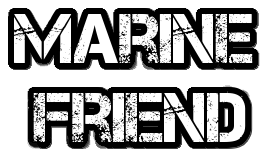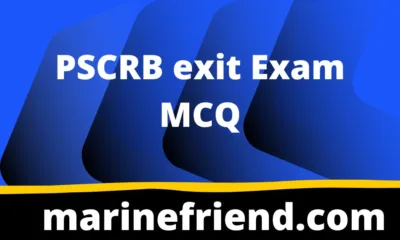EFA
Efa exit exam questions and answers part 1

Efa exit exam questions and answers part-1
Here are 30 multiple-choice questions (MCQs) with answers for the DG Shipping EFA (Elementary First Aid) exit exam:
- What is the first step in approaching a casualty?
– a) Check for responsiveness
– b) Check for breathing and pulse
– c) Check for injuries
– d) Check for medical history
– Answer: a) Check for responsiveness
- How do you control severe bleeding?
– a) Apply a tourniquet
– b) Elevate the wound
– c) Apply direct pressure
– d) Clean the wound
– Answer: c) Apply direct pressure
- What is the correct compression-to-ventilation ratio in CPR for an adult?
– a) 15:2
– b) 30:2
– c) 5:1
– d) 10:1
– Answer: a) 30:2
- How do you treat a minor burn?
– a) Immerse in cold water
– b) Apply butter
– c) Apply ice directly to the burn
– d) Cover with a clean, dry dressing
– Answer: d) Cover with a clean, dry dressing
- What is the purpose of the recovery position?
– a) To open the airway
– b) To control bleeding
– c) To prevent shock
– d) To assess responsiveness
– Answer: a) To open the airway
- How do you recognize a choking casualty?
– a) They are coughing
– b) They are speaking
– c) They are silent and clutching their throat
– d) They are breathing normally
– Answer: c) They are silent and clutching their throat
- What is the treatment for a suspected spinal injury?
– a) Keep the casualty warm
– b) Move the casualty to a more comfortable position
– c) Keep the casualty still and supported
– d) Elevate the casualty’s legs
– Answer: c) Keep the casualty still and supported
- What is the first step in treating a nosebleed?
– a) Pinch the nostrils together
– b) Tilt the casualty’s head back
– c) Apply a cold compress to the back of the neck
– d) Insert gauze into the nostrils
– Answer: a) Pinch the nostrils together
- What is the treatment for a dislocated shoulder?
– a) Immobilize the arm and apply a cold compress
– b) Encourage the casualty to move the arm
– c) Massage the shoulder to reduce the dislocation
– d) Apply heat to the shoulder
– Answer: a) Immobilize the arm and apply a cold compress
- How do you recognize a heart attack?
– a) Severe bleeding from the chest
– b) Sudden collapse and unconsciousness
– c) Severe crushing chest pain
– d) Profuse sweating and pale skin
– Answer: c) Severe crushing chest pain
- What is the treatment for a sprain?
– a) Apply heat to the affected area
– b) Elevate the limb and apply a cold compress
– c) Massage the affected area
– d) Encourage the casualty to move the limb
– Answer: b) Elevate the limb and apply a cold compress
- How do you recognize a stroke?
– a) Sudden severe headache
– b) Sudden loss of vision
– c) Sudden weakness or numbness in the face, arm, or leg
– d) Sudden confusion and difficulty speaking
– Answer: c) Sudden weakness or numbness in the face, arm, or leg
- What is the treatment for a foreign object in the eye?
– a) Rub the eye to dislodge the object
– b) Flush the eye with water
– c) Remove the object with tweezers
– d) Cover both eyes with a clean dressing
– Answer: b) Flush the eye with water
- How do you recognize a diabetic emergency?
– a) Profuse sweating
– b) Rapid, shallow breathing
– c) Unconsciousness
– d) Confusion and drowsiness
– Answer: d) Confusion and drowsiness
- What is the treatment for an asthma attack?
– a) Encourage the casualty to lie down
– b) Administer their prescribed inhaler
– c) Apply a cold compress to the chest
– d) Offer the casualty a drink
– Answer: b) Administer their prescribed inhaler
- How do you recognize a seizure?
– a) Unresponsiveness and absence of breathing
– b) Violent shaking and loss of bladder control
– c) Sudden collapse and unconsciousness
– d) Confusion and drowsiness
– Answer: b) Violent shaking and loss of bladder control
- What is the treatment for a heat exhaustion casualty?
– a) Encourage the casualty to drink cold water quickly
– b) Move the casualty to a cooler place and give small sips of water
– c) Apply a cold compress to the casualty’s forehead
– d) Elevate the casualty’s legs
– Answer: b) Move the casualty to a cooler place and give small sips of water
- How do you recognize a heat stroke?
– a) Hot, dry skin and a rapid, weak pulse
– b) Profuse sweating and pale skin
– c) Rapid, shallow breathing and confusion
– d) Unconsciousness and absence of breathing
– Answer: a) Hot, dry skin and a rapid, weak pulse
- What is the treatment for a casualty with hypothermia?
– a) Immerse the casualty in warm water
– b) Rub the casualty’s skin vigorously
– c) Remove wet clothing and cover the casualty with blankets
– d) Give the casualty a hot drink
– Answer: c) Remove wet clothing and cover the casualty with blankets
- How do you recognize a casualty in shock?
– a) Rapid, shallow breathing and confusion
– b) Profuse sweating and pale skin
– c) Unconsciousness and absence of breathing
– d) Rapid, weak pulse and cold, clammy skin
– Answer: d) Rapid, weak pulse and cold, clammy skin
- What is the treatment for a casualty with a suspected fracture?
– a) Encourage the casualty to move the affected limb
– b) Apply a cold compress to the affected area
– c) Immobilize the affected limb and support it in the position found
– d) Elevate the affected limb
– Answer: c) Immobilize the affected limb and support it in the position found
- How do you recognize a casualty with a head injury?
– a) Profuse bleeding from the head
– b) Loss of consciousness and confusion
– c) Sudden collapse and unresponsiveness
– d) Severe headache and dizziness
– Answer: b) Loss of consciousness and confusion
- What is the treatment for a casualty with an open chest wound?
– a) Apply a dressing and bandage firmly
– b) Encourage the casualty to take deep breaths
– c) Cover the wound with airtight material
– d) Elevate the casualty’s legs
– Answer: a) Apply a dressing and bandage firmly
- How do you recognize a casualty with a suspected poisoning?
– a) Profuse sweating and pale skin
– b) Rapid, shallow breathing and confusion
– c) Unconsciousness and absence of breathing
– d) Nausea, vomiting, and confusion
– Answer: d) Nausea, vomiting, and confusion
- What is the treatment for a casualty with an electrical burn?
– a) Apply a cold compress to the burn
– b) Remove the casualty from the electrical source
– c) Immerse the burn in cold water
– d) Elevate the affected limb
– Answer: b) Remove the casualty from the electrical source
- How do you recognize a casualty with a suspected heart attack?
– a) Sudden collapse and unconsciousness
– b) Severe crushing chest pain
– c) Profuse bleeding from the chest
– d) Rapid, weak pulse and cold, clammy skin
– Answer: b) Severe crushing chest pain
- What is the treatment for a casualty with a suspected stroke?
– a) Encourage the casualty to lie down
– b) Administer aspirin
– c) Keep the casualty warm
– d) Seek medical help immediately
– Answer: d) Seek medical help immediately
- How do you recognize a casualty with a suspected fracture?
– a) Severe swelling and deformity
– b) Profuse bleeding from the affected area
– c) Sudden collapse and unresponsiveness
– d) Severe crushing chest pain
– Answer: a) Severe swelling and deformity
- What is the treatment for a casualty with a suspected spinal injury?
– a) Keep the casualty still and supported
– b) Encourage the casualty to move
– c) Apply heat to the affected area
– d) Elevate the casualty’s legs
– Answer: a) Keep the casualty still and supported
- How do you recognize a casualty with a suspected fracture?
– a) Severe swelling and deformity
– b) Profuse bleeding from the affected area
– c) Sudden collapse and unresponsiveness
– d) Severe crushing chest pain
– Answer: a) Severe swelling and deformity
You can use these questions to practice for the EFA exit exam. Good luck!
EFA (Elementary First Aid) EFA exit exam questions and answers are essential for DG Shipping professionals to ensure they are prepared for emergencies and can effectively administer first aid. These questions cover a wide range of topics, including how to approach a casualty, control severe bleeding, perform CPR, treat minor burns, and manage various medical conditions. By practicing with these questions and answers, professionals can enhance their knowledge and skills, ultimately improving their ability to provide effective first aid in emergencies.
Efa exit exam questions and answers part 2
Efa exit exam questions and answers part 3
Also read:
OCTCO exit exam questions and answers
MFA Exit exam questions and answers
PST Exit exam questions and answers
These questions are generated from the e-learning website of DG shipping.

-

 SEAFARERS4 years ago
SEAFARERS4 years agoBsid dg shipping email id and contacts
-

 SEAFARERS4 years ago
SEAFARERS4 years agocommerce se merchant navy kar sakta hai kya?
-

 RPSL4 years ago
RPSL4 years agoBlacklisted RPSL companies 2021/2022/PART-2
-

 COLLEGES4 years ago
COLLEGES4 years agoGp rating college list approved by dg shipping in india
-

 PSCRB2 years ago
PSCRB2 years agoPSCRB exit Exam MCQ-1
-

 RPSL4 years ago
RPSL4 years agoBlacklisted RPSL companies 2021/2022/PART-1
-

 RPSL4 years ago
RPSL4 years agodg shipping approved company
-

 RPSL4 years ago
RPSL4 years agorpsl shipping company list in Belapur



